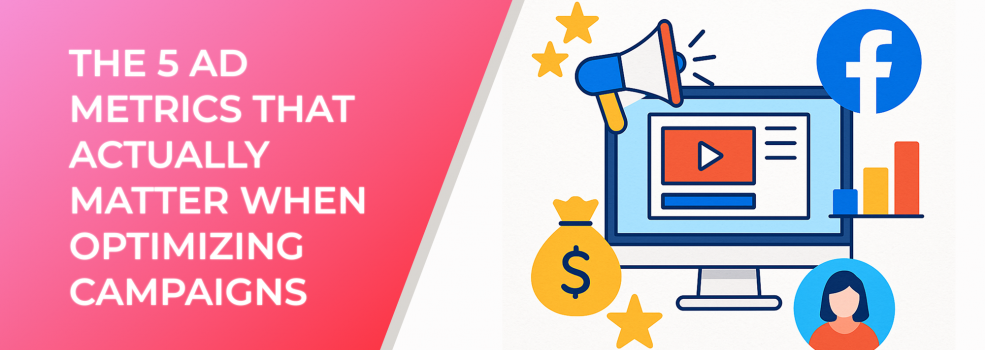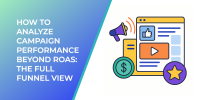When it comes to Facebook ad optimization, not all metrics are created equal. While it's easy to get distracted by likes, shares, or impressions, smart advertisers know that real growth comes from tracking the right data. In this post, we'll cover the five key ad metrics that actually matter when you're optimizing Facebook campaigns for ROI, conversions, and long-term performance.
1. Cost Per Acquisition (CPA)
CPA measures how much you're paying to acquire a new customer. It's one of the most critical Facebook ad metrics for any performance-driven campaign. A low CPA means you're spending less to bring in new business, which directly impacts your profitability.
According to WordStream, the average CPA for Facebook ads across all industries is $18.68.
Optimizing for CPA often involves testing creatives, refining audience targeting, and adjusting bidding strategies. Check out our post on How to Reduce Facebook Ad Costs and Improve Ad Performance for tactical tips.
2. Click-Through Rate (CTR)
CTR is the percentage of people who clicked on your ad after seeing it. A strong CTR indicates that your creative and message are resonating with your audience.
Benchmarks show that a good CTR for Facebook ads is around 0.90% across industries.
High CTRs can lead to better ad relevance scores, which Facebook rewards with lower CPCs and more impressions. If your CTR is low, test new images, headlines, or call-to-actions (CTAs) to see what captures attention. Our guide on How to Revive Cold Traffic with High-Converting Facebook Video Ads offers inspiration and best practices.
3. Conversion Rate
Conversion rate tracks the percentage of users who completed a desired action after clicking your ad, such as making a purchase or signing up. It's a direct measure of how effective your landing page and offer are.
Average Facebook Ad Performance Benchmarks: Use these as a starting point when evaluating your own campaign metrics
Across ecommerce, the average Facebook ad conversion rate is 9.21%.
Low conversion rates often mean a disconnect between the ad promise and the landing page experience. Focus on message alignment and ensure your landing pages are optimized for mobile users. Combine this with hyper-targeted audience segmentation through platforms like LeadEnforce to increase conversions.
4. Return on Ad Spend (ROAS)
ROAS tells you how much revenue you're generating for every dollar spent on ads. It's arguably the most important Facebook ad metric for evaluating overall campaign profitability.
A healthy ROAS for ecommerce is generally between 4x and 10x, depending on the product and funnel.
Each stage of your Facebook ad funnel contributes to overall ROAS. Optimize every step to improve returns
Improving ROAS requires a holistic view—creative, targeting, bid strategy, and customer journey all need to be in sync. Read our deep dive on How to Analyze Campaign Performance Beyond ROAS: The Full Funnel View to refine your strategy.
5. Frequency
Frequency shows how many times your ad is being shown to the same user. While some repetition is necessary for brand recall, high frequency often leads to ad fatigue and declining performance.
Experts recommend keeping frequency under 3 for cold audiences and under 5 for warm audiences.
If your frequency creeps up, rotate creatives or expand your custom audience list. Use a tool like LeadEnforce to build fresh lookalike audiences and avoid oversaturation.
Final Thoughts
Effective Facebook ad optimization means focusing on the metrics that matter. Cost per acquisition, click-through rate, conversion rate, ROAS, and frequency give you a comprehensive view of your ad performance. By prioritizing these indicators and leveraging tools like LeadEnforce to supercharge audience targeting, you'll unlock scalable, sustainable campaign success.

